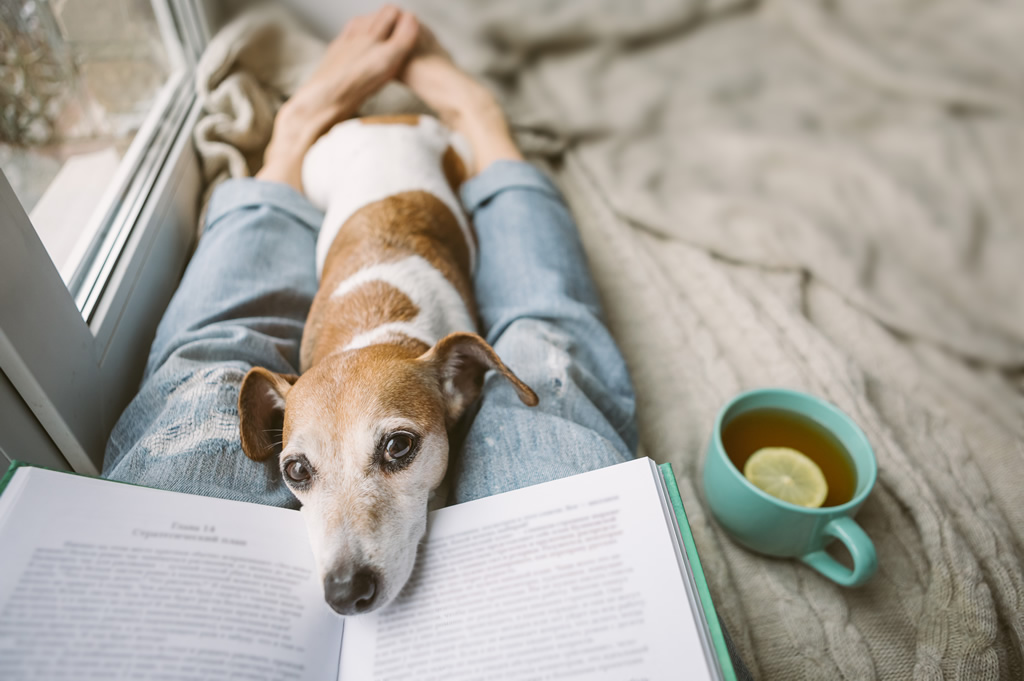
While many of our beloved four-legged friends have loved the extra attention and company of their owners working from home, they may find it a little tough when we get back to normal. As dog owners, we want to make sure our dogs are happy and healthy! But, as we return to work and reduce the time spent with our dogs, we may also feel the strain if our dog exhibits destructive or naughty behaviour while we’re out of the house.
Along with excessive barking, soiling, salivating and escapist tendencies, these can be the symptoms of separation anxiety in dogs. As pack animals, canines can get stressed out when left alone. All is not lost, however, and here’s our advice on how to address separation anxiety in dogs!
What is Separation Anxiety?
Just like us, dogs are naturally social animals and like to live in family groups. Dog separation anxiety is a condition in which dogs show signs of distress when they are left alone or separated from their owner. It can affect dogs of all ages and breeds.
What are The Signs of Separation Anxiety in Dogs?
There are some obvious signs of separation anxiety in dogs, like:
- Howling, barking or whining to excess
- Destructive behaviour, chewing and destroying furniture
- Toileting issues like weeing and pooing (even if house trained)
However, research suggests that 8 out of 10 of dogs will find it hard to cope when left alone, but half of these won’t show any obvious signs, so it can be very easy for owners to miss. Just because they’re happy to see you when you get home, doesn’t mean they weren’t suffering whilst you were gone. Here are some of the more subtle signs that your dog may have separation anxiety or experiencing a lot of stress when they’re alone.
- Self-harm, biting or licking themselves to the point where they hurt themselves
- Digging and scratching at doors or windows
- Drooling or panting more than normal
- Trembling
- Pacing, often in an obsessive pattern
- Trying to escape
- Coprophagia – eating their poo! Now, as some dogs do this anyway, it tends to only be a sign if your dog wouldn’t normally do when you’re around.
Why Do Some Dogs Suffer from Separation Anxiety?
It’s not fully understood why some dogs suffer from separation anxiety and others don’t. For some dogs, separation-related behaviours are simply a product of boredom due to lack of appropriate physical and mental stimulation. Alternatively, it could be because of a change to their environment or schedule. Whereas for other dogs, separation-related behaviours and anxiety are much deeper rooted. When a dog is emotionally attached to someone and that person goes away, it can cause fear, frustration, and anxiety. Or, if they were previously abandoned even the slightest separation may trigger anxiety.
Understanding the root cause of the problem and why your dog is reacting in this way will allow you to implement the right kind of training that will improve their behaviour in the long term but not necessarily straight away.
How To Treat Mild Separation Anxiety
If your dog is exhibiting severe distress when left alone it’s time to intervene. Depending on how serious their condition is, here are some strategies recommended for treating separation anxiety in dogs and helping them get used to being left alone:
Go slow and steady:
When getting your pooch used to being left alone, begin by leaving the room for short periods of time. Build it up gradually, leaving the house for longer periods when you feel the time’s right. Once your dog knows you’ll always come back, they should be more at ease.
Stick to a routine:
Dogs are creatures of habit! Maintaining the same routine every time you go out can help to reassure them that it’s nothing out of the ordinary. If they’re used to the routine, they’ll see it as just something that happens.
Treat them:
To help your dog associate being left alone with something positive, give them a tasty treat or their favourite toy when you leave. A stuffed and frozen Kong or calf’s hoof might do the trick nicely!
Exercise:
Make sure your pup is well exercised before you leave them alone for any long period of time. This will help to wear them out, increasing the chances that they’ll spend their time sleeping peacefully until your return
Shhhhhh!:
If your dog barks excessively when you’re away, it might be due to noise from outside or seeing people and cars through the window. When you go out, try leaving the radio on in another room and closing the curtains to minimise any potential disturbances.
Leave your scent behind:
Some dogs will try to create a barrier of your scent around them whilst you’re gone, so leave some dirty laundry near them to reassure them they won’t be alone for long.
Remain calm:
Don’t make a big deal about going out or getting back! Giving your dog a long and drawn out goodbye might make them worry. When you return make sure to greet them calmly, as this can reinforce the idea that being left alone isn’t the worst thing in the world. Try not to worry or stress, it’s been proven that dogs can mirror the stress levels of their owners!
Be kind:
It can be frustrating when your dog has caused damage or toileted indoors. However, punishing them for this could be the wrong approach. They won’t understand what you’re telling them off for, so will become confused, and might even learn that it’s a way to get your attention! Letting them know you’re not angry with them might achieve better results in the long run.
Know their limits:
The most important thing to remember is never to leave them alone for too long! If you know they can’t hold their bladder for more than four hours, don’t leave them alone for eight. In cases where you really have to be out all day hiring a dog walker or sitter might be the best option.
Consider crating:
Not all dogs like to be confined to a small space, but some can see a crate as a safe space that they can make comfortable and their own in your absence. Always make sure this is right for your dog though, it is not a once size fits all – quite literally! Check out our hints and tips on crate training. If a crate is too much for your dog, they might be better off in just one room with the door closed rather than have full run of the house.
What Not To Do
Avoid Punishments. They aren’t effective for treating separation anxiety and can make the situation worse. Anxious behaviours are not the result of disobedience, they are distress responses! Your dog displays anxious behaviours when left alone because they’re upset and trying to cope with a great deal of stress. If you punish or scold them, they can become more distressed, and the problem could get worse.
When trying to treat your dog’s separation anxiety, it’s important to remember that every dog is different and will progress through recovery at different rates. Always try to work within your dog’s limits and keep an eye on their stress levels. Recognising your dog’s stress signals and knowing how to manage their them is key to ensuring your dog is happy.
What To Do if The Problem is More Severe
If you dog exhibits stress when settling down for the night or gets restless when the lights go out, this can be another form of separation anxiety. A calming routine can help ease your dog’s distress. Try providing them with a safe and secure place to sleep and offer them their favourite cuddle toy for comfort. If your dog continues to experience separation anxiety at night, then you may want to consider consulting your vet as it could be a symptom of a more serious health problem.
Conclusion
Recognising signs that your dog is in distress and knowing how to manage it is key to making sure your dog is healthy and happy! Separation anxiety can be difficult for both dogs and their owners, but we hope our advice can help your dog to feel safe and secure on their own!


